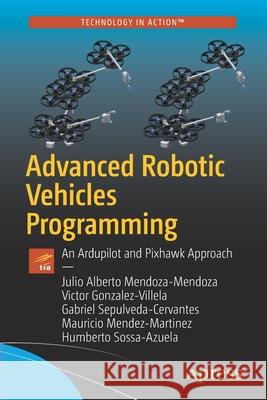Advanced Robotic Vehicles Programming: An Ardupilot and Pixhawk Approach » książka
topmenu
Advanced Robotic Vehicles Programming: An Ardupilot and Pixhawk Approach
ISBN-13: 9781484255308 / Angielski / Miękka / 2020 / 439 str.
Kategorie:
Kategorie BISAC:
Wydawca:
Apress
Język:
Angielski
ISBN-13:
9781484255308
Rok wydania:
2020
Ilość stron:
439
Waga:
0.72 kg
Wymiary:
23.5 x 15.6 x 2.6
Oprawa:
Miękka
Wolumenów:
01
Dodatkowe informacje:
Wydanie ilustrowane











